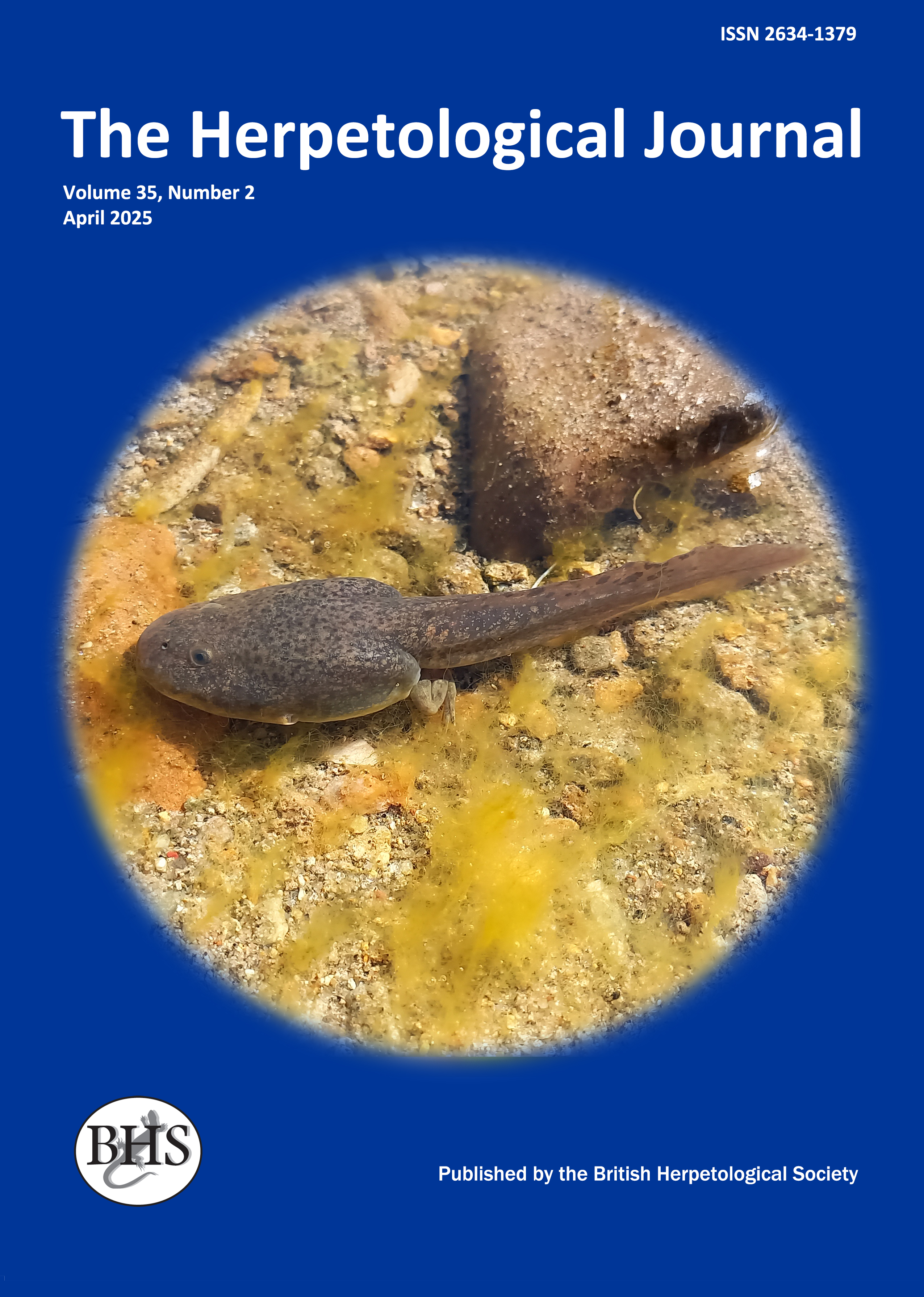
The Herpetological Journal
The Herpetological Journal is the Society's prestigious quarterly scientific journal. Articles are listed in Biological Abstracts, Current Awareness in Biological Sciences,Current Contents, Science Citation Index, and Zoological Record.
ISSN 0268-0130
2021 Impact Factor from Clarivate for the Herpetological Journal is 1.194, an increase of 0.332 from 2020.
pdf 07. Food selection strategy during the reproductive period in three syntopic hylid species from a subtropical wetland of north-east Argentina
1401 downloads
Open Access
pp. 49-58
Authors: Macale, Daniele; Vignoli, Leonardo & Maria Carpaneto, Giuseppe
Abstract: Dendropsophus nanus, D. sanborni and Lysapsus limellum are three hylid species, similar in body size and frequently coexisting at the same reproductive sites. To determine whether food partitioning occurred during the reproductive phase, both numerical and volumetric analyses of stomach contents were performed on syntopic populations inhabiting a wetland system in Corrientes Province, north-east Argentina. The analyses showed a marked specialization towards Diptera prey in Dendropsophus species, particularly in D. sanborni, and a more generalist habit in L. limellum. The three study species exhibited different foraging modes, with L. limellum belonging to the sit-and-wait predator type, D. sanborni to the forager predator type, and D. nanus exhibiting a mixed foraging mode. The comparison of the feeding strategies adopted by the various species in different habitat types and condition of syntopy showed a noteworthy plasticity. According to Schoener's food size selection strategy model for a syntopic predator species system, the larger species (L. limellum) selected prey bigger in size and the smaller (D. sanborni) ate a larger number of prey specimens, whereas D. nanus showed an intermediate trophic strategy. Although the degree of trophic niche overlap was higher than expected, the study species did not show a clear segregation in terms of use of space, hence the coexistence mechanism during the reproductive period should not be related to competition processes for food resources.
Keywords: DIET, DENDROPSOPHUS, AMPHIBIA, LYSAPSUS, RESOURCE PARTITIONING

